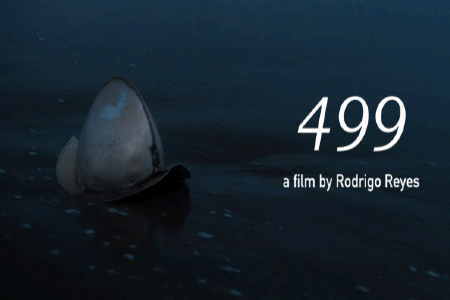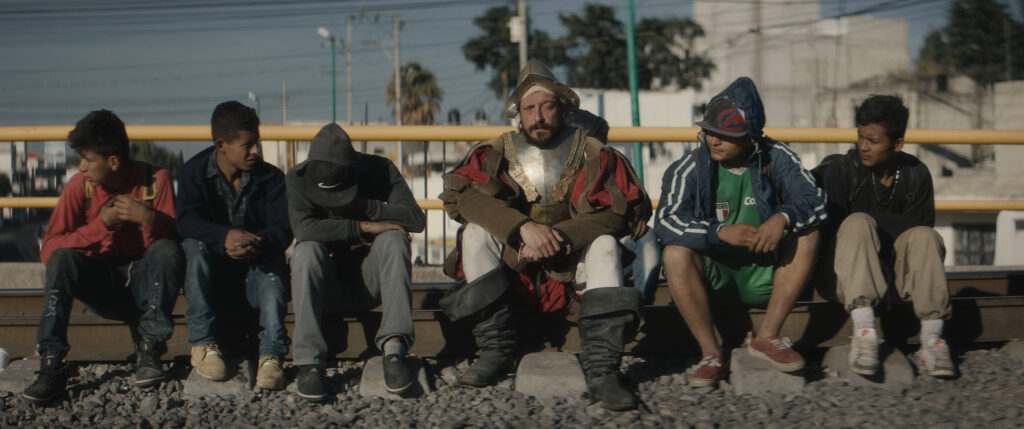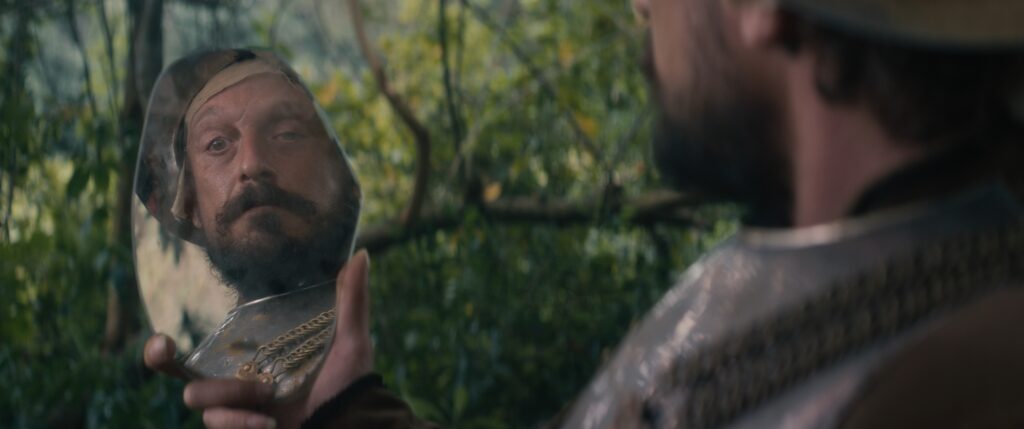The year 2021 marks the 500-year anniversary of the Spanish conquest of Mexico. To commemorate the historical occasion, director Rodrigo Reyes offers a poignant hybrid-cinema experience to explore the brutal legacy of colonialism in contemporary Mexico.
Through the eyes of a ghostly conquistador (played by newcomer Eduardo San Juan Breña), Reyes recreates Hernán Cortez’s epic journey from the coasts of Veracruz to the Aztec capital of Tenochtitlan, the site of contemporary Mexico City. As this fictional character is forced to interact with real victims and subjects of Mexico’s failed drug wars, Reyes portrays the country’s current humanitarian crisis as part of a vicious and unfinished colonial project, still in motion, nearly five-hundred years later.
499 mixes non-fictional and performative elements with components of a road movie to show how past traumas continue to affect contemporary reality.
In Reyes’ own words, he describes his reasons for making 499… “Anniversaries are incredibly powerful opportunities to bring history to life. Many countries with a colonial past, including the United States, are in desperate need of confronting their own histories of exploitation—not because this past is gone and resolved, but precisely because it’s alive and well. We can only re-imagine and rebuild our universe once we exorcise our ghosts. 499 represents the unique chance to take a journey into history, to spark a reflection on the lingering legacies of colonialism and the effects they have had on the multiple, ongoing struggles across much of the post-colonial world.”
There is much to think about, appreciate and take away from 499 from its opening scene all through this epic journey with this conquistador.
Many aspects of this film have stayed with me since I saw the film at Hot Docs last year, and in second viewing I have found new layers and other aspects to appreciate. Noticing how the interactions in the film are all uniquely different from one another is each real person was deeply involved in the building of their scenes.
Hearing phrases like “We are not asking for vengeance but we are asking for justice [No pedimos venganza per si pedímos justicia],” is even more powerful. The beautiful poetry by Sixto Cabrera in nahuatl language, one of many Indigenous languages of Mexico also adds another artistic layer to the history we are witnessing on this journey.
I also want to highlight the entire production team’s efforts. The epic and poetic cinematography by Alejandro Mejía. The depth of San Juan Breña’s perfomance even with minimal dialogue. The moving and thought-provoking writing by Reyes and Lorena Padilla, which become the reflections of the conquistador as he embarks on this journey and is forced to hear the voices of the oppressed, and lead to a transformation of sorts.
The editing work by Andrea Chignoli and Daniel Chávez Ontiveros and music by Pablo Mondragón complement all other elements come together to create an experience that moves and makes one aware of how connected our past connects to the present, and makes us think of how we can do better in the future.
Below is my interview with Reyes on his way to the film’s premiere in New York. The film opens in other US cities over the next few weeks, making its international after its US run.








